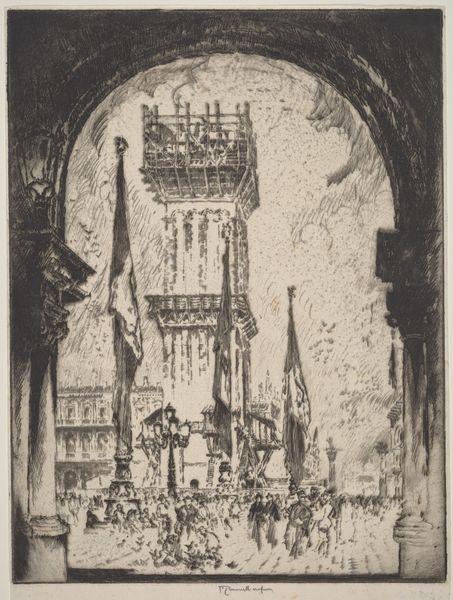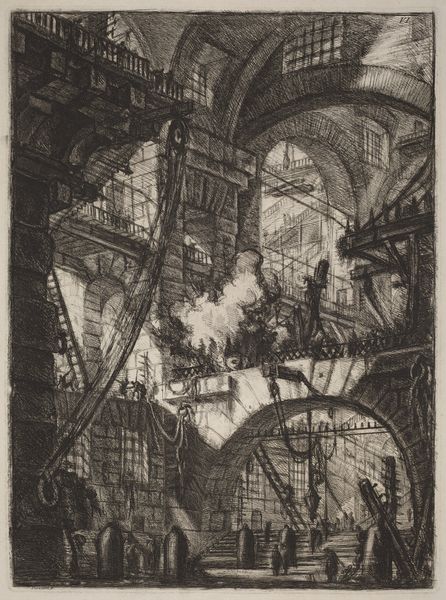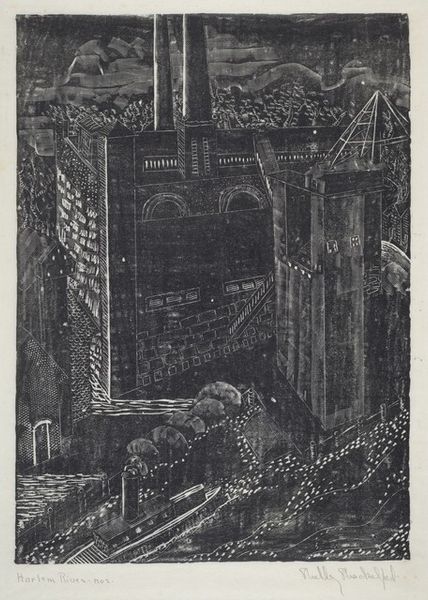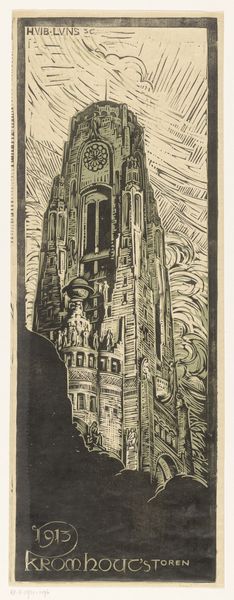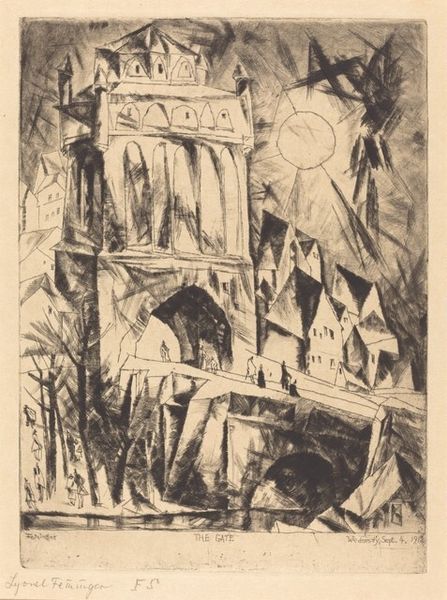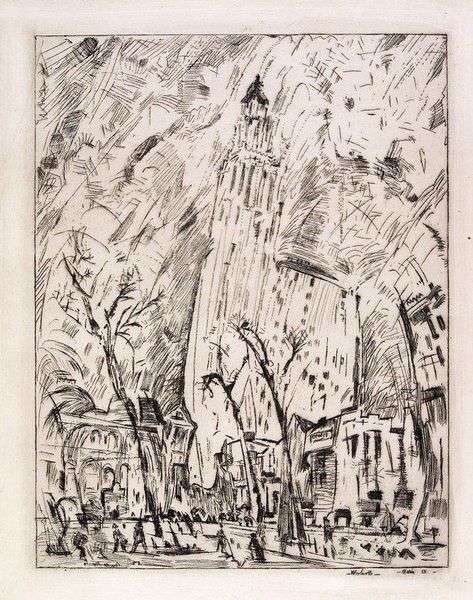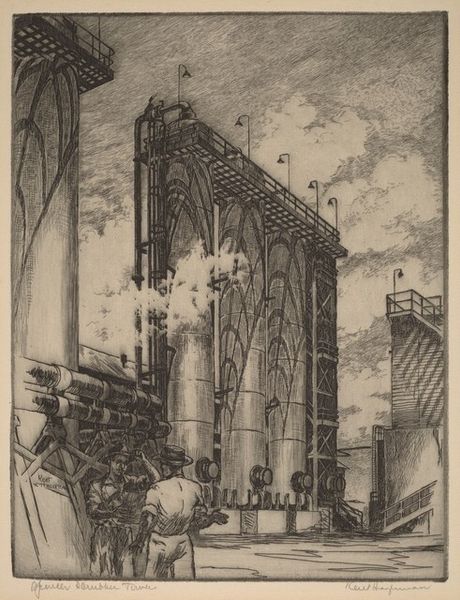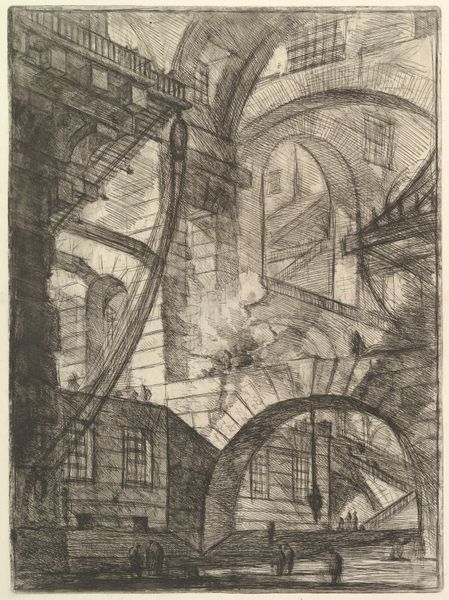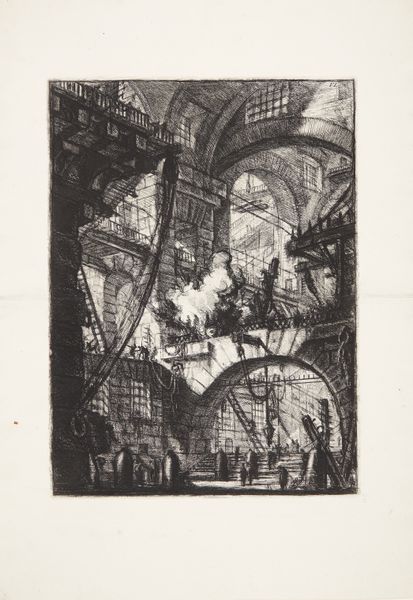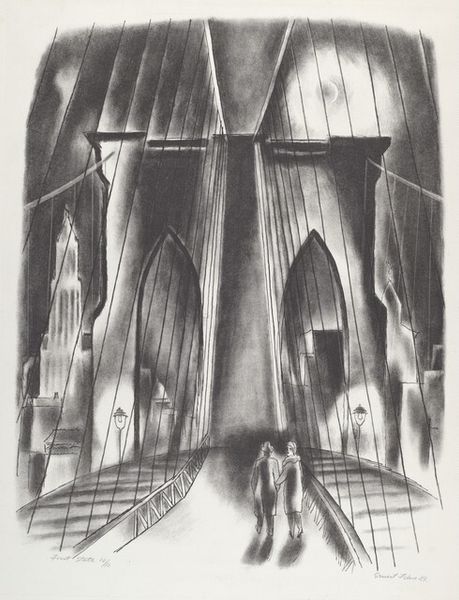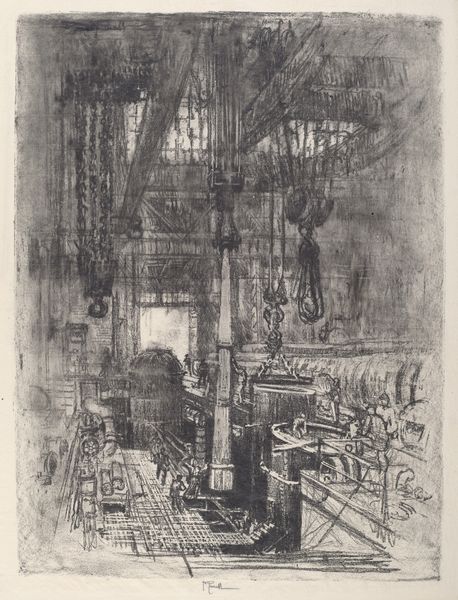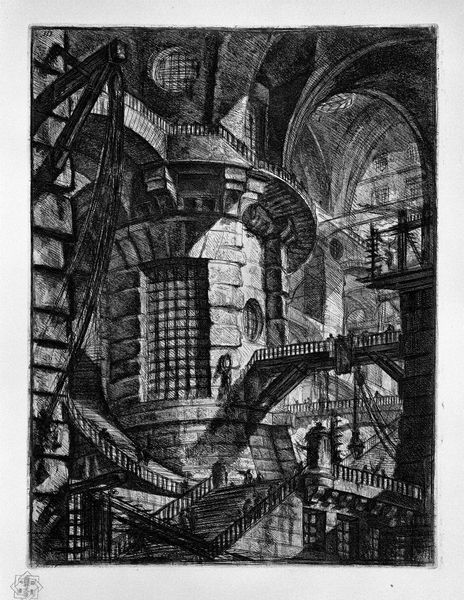
print, etching, architecture
# print
#
etching
#
landscape
#
figuration
#
surrealism
#
architecture
Dimensions: stone: 503 x --- mm image: 463 x 317 mm sheet: 579 x 475 mm
Copyright: National Gallery of Art: CC0 1.0
Curator: This etching, entitled "The Tower," was created in 1956 by Joseph Mugnaini. The print work offers a striking study of architecture and figuration, firmly rooted in the style of surrealism. Editor: My initial response is… dizzying. The visual language feels so precarious! I’m drawn to the dynamic composition, the towering structure dominating the scene and the subtle light from the moon that contrasts with a shadowed world in states of ruins. Curator: I'm curious about the technical processes behind this etching. The labor invested in carefully biting the plate, creating the line work, would have been painstaking. Given the date of its creation, how do you interpret it from a Formalist position, reading its architecture as symbolic of any specific post-war societal angst or collective dreams? Editor: The Tower reads to me as a psychological space rendered in architectural form. The lines are evocative, creating textures, almost tactile representations of a building constantly evolving into higher structures. One level creates another, almost like a surrealist ant colony or unstable Babel's Tower. Curator: Precisely. Mugnaini crafted animation for Disney films in the mid-century. Does considering his work as a product of a large cultural institution during a time of pervasive media inform our view? I’m thinking of the distribution and accessibility of this printmaking process itself, perhaps commenting on society as well? Editor: Absolutely. The dense web of lines makes it difficult to separate foreground from background. The overall grayness adds to a flattening effect; even though there are deep and perspectival structures, there seems to be some breakdown of traditional visual space and a more two-dimensional treatment to depth. I see now a conversation between accessibility and complexity, questioning high and low. Curator: Looking closely, observe how Mugnaini includes tiny figures scattered about, juxtaposed against a setting of ruin. The contrast, viewed alongside the potential allusion to the tower of Babel, suggests commentaries about ambition, civilization, or perhaps the constant act of constructing social and ideological narratives. Editor: Well, having seen this work anew, through the materiality of lines, I see it as a meditation on grand designs undermined, not as the end, but the opportunity for something very different to emerge. Curator: For me, appreciating how these works reflect the tensions of a culture through this print helps one realize that while art might be deemed as high, its essence lies in such widespread influences, available to so many people via industrial processes and imagination.
Comments
No comments
Be the first to comment and join the conversation on the ultimate creative platform.
